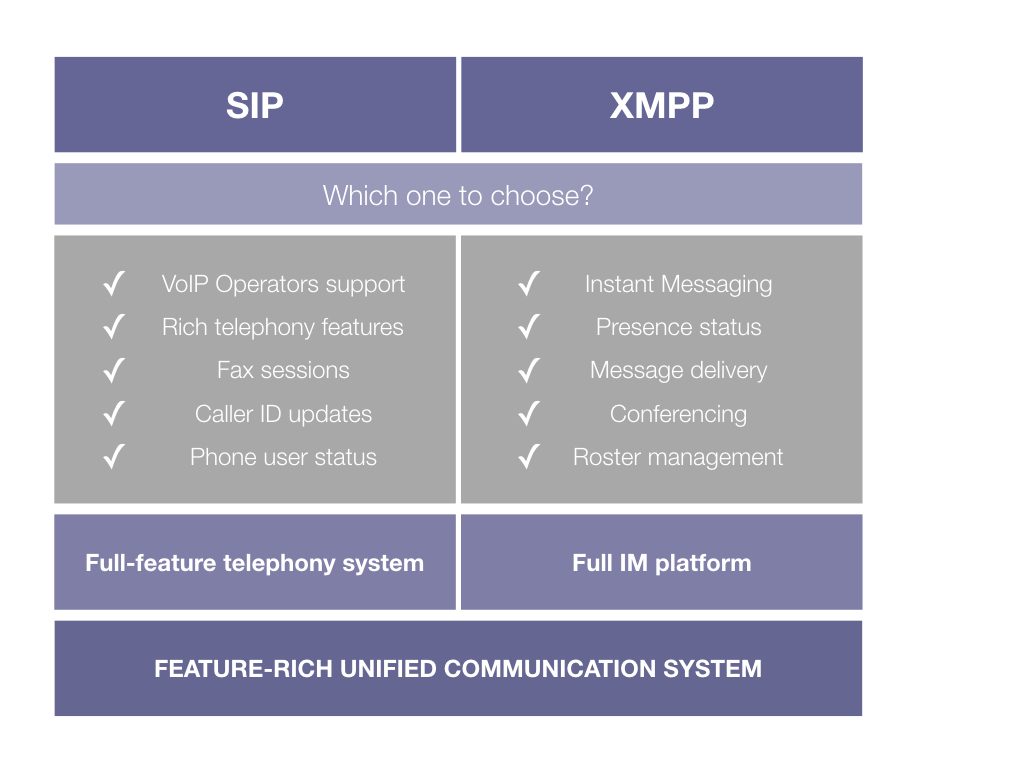
In most scenarios, a solution deployed in a cloud environment (such as Amazon AWS) offers the best overall conditions including easy redundancy, by relying on different physical data centers, and better connectivity, by providing worldwide data centers.
However, there are scenarios where an in-house UC platform can offer advantages over a cloud solution. When the UC services are accessed mostly by local users and using local PSTN trunking, a local deployment is the best solution. Another scenario might be a site with poor Internet connectivity where phone services must be provided.
Continue reading “Reviewing Deployment Scenarios of UC systems”

 In this blog article we will discuss the basic standards used for real-time communications — SIP and XMPP — what is the difference, how each of them works, and, which one to choose.
In this blog article we will discuss the basic standards used for real-time communications — SIP and XMPP — what is the difference, how each of them works, and, which one to choose.  Web-based VS native administration is a long-standing dispute within this field. This topic is particularly important because it defines all of the user’s experience. Let’s examine, why web-based communication solutions are the best choice for delivering high service quality.
Web-based VS native administration is a long-standing dispute within this field. This topic is particularly important because it defines all of the user’s experience. Let’s examine, why web-based communication solutions are the best choice for delivering high service quality. Vertical Solutions based on Unified Communications features can be successfully implemented for different industries, including Retail, Education, Healthcare, Manufacturing, Hospitality, Healthcare and Finance. In this blog article we will analyze some of these features and their ways of implementation.
Vertical Solutions based on Unified Communications features can be successfully implemented for different industries, including Retail, Education, Healthcare, Manufacturing, Hospitality, Healthcare and Finance. In this blog article we will analyze some of these features and their ways of implementation.